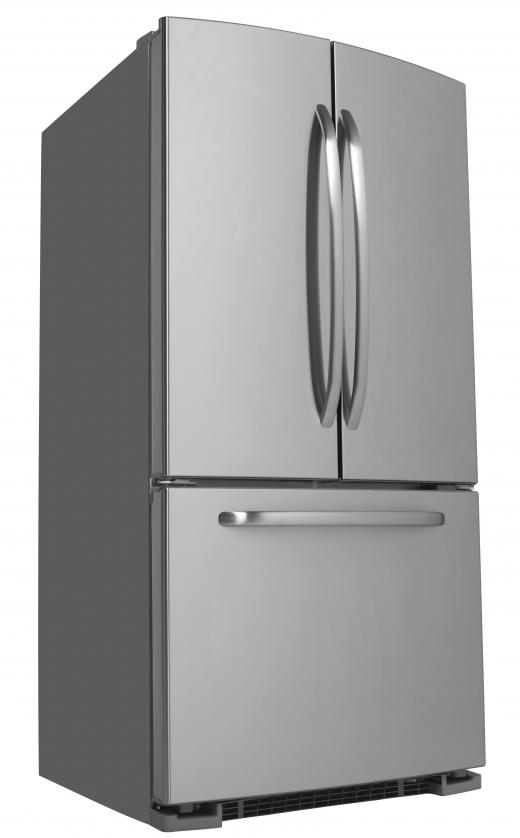What is the Peltier Effect?
The Peltier effect was an inadvertent discovery that Jean Charles Athanase Peltier made when he was investigating electricity. In an experiment that he would remember the rest of his life, Peltier joined copper wire and bismuth wire together and connected them to each other, then to a battery. When he switched the battery on, one of the junctions of the two wires got hot, while the other junction got cold. If the cold junction was put inside an insulated box, it became a low-efficiency refrigerator.
Peltier probably didn't know that he would be one of the first inventors of the refrigerator. Modern students are often introduced to Peltier as a physicist, but might be surprised to find that he didn't study physics until his retirement from the clock-making business at age 30. Regardless of his experience in the field, however, the contributions he made to physics were immense.

The Peltier effect is sometimes coupled with its inverse, called the Seebeck effect, and the two effects can be related to a third, the Thomson effect. Together, the Peltier, Seebeck and Thomson effects are different components of the same scientific principle. In essence, they show that electricity can cause a heat difference at the junction of two different metals connected together.
This effect has been replaced by other methods of heating or cooling for the same reason that it became popular to begin with: although the process and utilization of the effect is simple, it is also inefficient. The Peltier effect dissipates quite a bit of heat; therefore, using it in a practical manner involves finding a way to deal with this excess. Putting a fan in the cooler to carry the heat away is one popular means to make it more practical, but this can also be an expensive fix.
A Peltier element has a number of disadvantages besides inefficiency. It uses a lot of electricity and creates much more heat than it transports, which can easily lead to overheating if the extra heat isn't compensated for. Condensation is another potential dangerous problem, occurring if components are cooled too much. This can lead to a short circuit between elements, which is never a good thing when dealing with electronics.
All the negatives aside, the Peltier effect has a lot of technological potential. It is very reliable, and since it has no moving parts, it rarely needs maintenance. Unlike other types of cooling systems, the Peltier method is easily transportable and affordable. Of course, Jean Peltier didn't know the true future of the physics behind his discovery, and likely didn't put as much thought into it as he did his other interests. The remainder of his life, he studied other physical phenomena, including the high-altitude boiling point of water and atmospheric electricity.
AS FEATURED ON:
AS FEATURED ON:











Discussion Comments
@highlighter- Thermoelectric modules are also used in aerospace and aeronautics. When a craft is exposed to solar radiation outside of the earth’s atmosphere, thermoelectric coolers are used to dissipate heat form the hot side of the craft to the cold side of the craft (the side facing away from the sun). This prevents components from being stressed by running in hot and cold environments, essentially stabilizing the craft's temperature in space.
Thermoelectric devices are also used in molecular biology to rapidly heat and cool the reaction mixture in the synthesis of DNA. Other scientific applications include using Peltier coolers to stabilize wavelengths in laser beams. It sounds like science fiction, but the exact wavelength of a laser is dependent on the exact temperature of the light source.
@highlighter- The Peltier effect has a number of modern uses. The most well-known use is in thermoelectric coolers. These are essentially coolers that you plug into your 12v car adapter. The thermoelectric devices manufacturers install in these coolers are small, light, and portable making them easy to carry. Imagine if you had to carry a chilled cooler that had a small condenser and heat exchanger coils attached to it.
Thermoelectric coolers are also used to cool sensitive electronic devices like computer components. Computers and servers can then be cooled without noisy fans, and they can be adequately cooled when they are overclocking (running a processor at a faster clock rate than designed). I am sure there are other uses for thermoelectric devices, but these are the two uses that I know of.
What are some uses for Peltier cooling? I have never heard of this effect before, and I am interested in knowing what types of applications use this physical property.
Post your comments